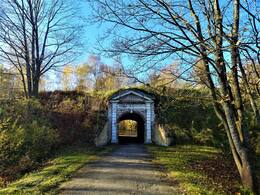Kodėl olimpinės žaidynės nevyko Latvijoje...ar povandeninio laivo remontas Daugavgryvoje, Baltijos karinio jūrų laivyno remonto dirbtuvėse
Kai Maskva ruošėsi 1980 m. vasaros olimpinėms žaidynėms, iškilo klausimas, kur surengti buriavimo varžybas? Pasirodo, pasirinkimas iš pradžių krito į Rygą, nes joje yra idealios sąlygos plaukioti Rygos įlankoje ir miestas taip pat senas ir gražus, nenuvils. Tačiau kai kurie rygiečiai vis dar prisimena arba jaunoji karta skaitė internete, kad Ryga „neva“ atsisakė šios didelės garbės ir todėl konkursas buvo perkeltas į Talino priemiestį Piritą. Estai gavo didžiulį finansavimą ir pastatė naują bei modernų buriavimo ir poilsio kompleksą, kuriuo pasigrožėti po olimpiados ateidavo kiekvienas latvis.... Tačiau dabar paaiškėjo vienas įdomus niuansas - tapo žinoma, kodėl Ryga atsisakė šios garbės...
Net ir sovietmečiu biurokratija, matyt, veikė gana lėtai, nes aparatas buvo gana didžiulis ir griozdiškas. Kol buvo derinamas šis klausimas, kažkas jau sugalvojo, kad olimpinėms žaidynėms reikia nutiesti naują ir modernų greitkelį, jungiantį Pārdaugavą su Bolderaja ir Daugavgrīva... Buvo numatyta nauja keturių juostų magistralė ir net pradėta tiesti. Jeigu dabar važiuojame iš Pārdaugavos Dauguvgrivos kryptimi, tai maždaug nuo tos vietos, kur kairėje dabartinio kelio pusėje vis dar matosi buvusio Spilvės oro uosto kilimo ir tūpimo takas, kairėje kelio pusėje dabar matosi išlyginta apie kilometro ilgio danga, todėl kelias yra beveik dvigubai platesnis. Matyt, šis lygus, išlygintas, dabar žole ir krūmais, o vietomis net nedideliais medžiais apaugęs pakraštys buvo pradinis, bet nebaigtas greitkelis... Dabar jo liekanos matomos beveik iki pat posūkio į Kremerį. Bet – kodėl iš tiesų viskas sustojo ir buriavimas buvo perkeltas į Estiją?
Projektą ir planą kariškiai pristabdė ir sustabdė. Bolderojoje veikė Baltijos karinio jūrų laivyno remonto dirbtuvės, kuriose, kaip paaiškėjo devintojo dešimtmečio pabaigoje, buvo remontuojami ne tik sovietiniai povandeniniai laivai, bet ir irakietiški, nes Sadamas Husseinas tuo metu dar buvo SSRS draugas. Libijos karo jūreiviai taip pat buvo mokomi mokymo bazėje Bolderajoje. Netoliese buvo ir Mangalsala, kur buvo įrengta speciali antenų įranga, kurios pagalba buvo perimti NATO lėktuvų pokalbiai virš Baltijos jūros. Gali būti, kad netoliese buvo dar kažkas, ko Rusijos kariškiai nenorėjo reklamuoti. Prisiminkime, kad tais laikais užsienio jachtos tiesiog negalėjo plaukti į Latviją, nes per Irbės sąsiaurį nepraplauks. Matyt, Rusijos kariškiai nenorėjo atskleisti savo paslapčių, slypinčių Bolderojoje ir Dauguvos žiočių srityje. Dar vienas įdomus faktas – prieš karą toje pačioje vietoje, kur devintajame dešimtmetyje buvo remontuojami SSRS draugiškų užsienio režimų povandeniniai laivai, nepriklausomos Latvijos valstybės laikais buvo įsikūrusi Bolderajos laivų statykla UAB „Vairogs“. Sprendimą grąžinti jį SSRS karinio jūrų laivyno liaudies komisariato kontrolei 1940 metų rugsėjį pasirašė ne kas kitas, o Latvijos TSR liaudies komisarų tarybos pirmininkas Vilis Lācis. Žinoma, tai vyksta ne jo paties iniciatyva, o atitinkamų to meto SSRS kompetentingų institucijų sprendimu.
Nikolajus Vladimirovas, oro uosto „Spilvė“ direktorius; A.Pope, Rygos pagrindinis priemiestis, Ryga, Aukso grūdas, 2005 m.
Susijusios vietos
Daugavgryvos tvirtovė
Daugavgryvos tvirtovė (įėjimas iš Birzės gatvės) yra Daugavgryvos saloje, kur Bulupės upė įteka į Dauguvos upę. Tvirtovė buvo pastatyta XVII a., siekiant apsiginti nuo priešų, judančių Rygos kryptimi, kuri buvo svarbus administracinis, prekybos ir gamybos centras. Vėliau ji tapo pagrindiniu Latvijos armijos pakrantės gynybos įtvirtinimu su keliais atramos taškais. Ši gynybinė įtvirtinimų sistema yra vienas vertingiausių Latvijos karinio paveldo objektų. Ši tvirtovė yra Latvijos karinės istorijos liudininkė. Pavyzdžiui, Krymo karo metu (1853–1856 m.) čia buvo mokomos Latvijos ir Estijos patrankinių valčių įgulos. Pagrindinis šių dalinių tikslas buvo ginti vietos uostus ir pakrantę nuo britų karinio jūrų laivyno atakų. Pirmojo pasaulinio karo metu čia buvo suformuotos Daugavgryvos milicijos kuopos. Tai buvo pirmieji Latvijos koviniai daliniai, atsiradę dar anksčiau nei Latvijos šauliai. Šiandien galima pamatyti tvirtovės teritoriją. Netoliese yra Kometfortas ir Pajūrio gamtos parkas, o kitoje Dauguvos pusėje – Mangaļsalos įtvirtinimai.





